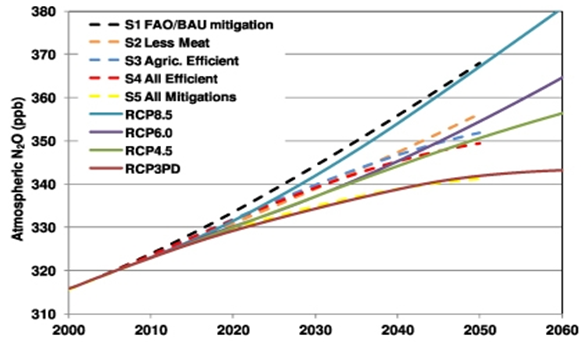Drastic changes needed to curb nitrous oxide emissions
Contact: Michael Bishop, michael.bishop@iop.org, 01-179-301-032, Institute of Physics
12 April 2012
Meat consumption in the developed world needs to be cut by 50 per cent per person by 2050 if we are to meet the most aggressive strategy, set out by the Intergovernmental Panel on Climate Change (IPCC), to reduce one of the most important greenhouse gases, nitrous oxide (N2O). This is the finding from a new study, published today, 13 April 2012, in IOP Publishing’s Environmental Research Letters, which also claims that N2O emissions from the industrial and agricultural sectors will also need to be cut by 50 per cent if targets are to be met.
The findings have been made by Dr Eric A Davidson of The Woods Hole Research Center, Massachusetts, and demonstrate the magnitude of changes needed to stabilise atmospheric N2O concentrations as well as improve the diets of the growing human population. N2O is the third highest contributor to climate change behind carbon dioxide (CO2) and methane (CH4); however, it poses a greater challenge to mitigate as nitrogen is an essential element for food production. It is also the most potent of these three greenhouse gases as it is a much better absorber of infrared radiation; however, the total anthropogenic emissions are about 6 million metric tons of nitrogen as N2O compared to 10 billion metric tons of carbon as CO2. The main sources of N2O are from the spreading of synthetic nitrogen fertilizers onto agricultural soils and storage and use of livestock manure. The nitrogen contained in fertilizers and manure is broken down by microbes that live in the soil and released into the atmosphere as N2O. […]
